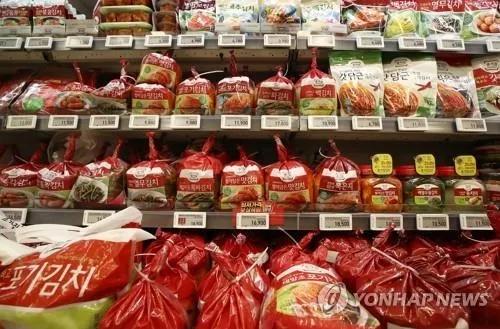Why Did South Korea's Food Exports to the US Drop in July?

Synopsis
Key Takeaways
- South Korea's food exports to the U.S. dropped for the first time in nearly two years.
- Exports amounted to US$139 million, a 6.7 percent decrease from last year.
- Key products like ramyeon and snacks saw significant declines.
- Government meetings are planned to support exporters.
- Future exports may be threatened by ongoing economic challenges.
Seoul, Aug 20 (NationPress) South Korea's food exports to the United States experienced their first year-on-year decline in nearly two years this July, primarily due to Washington's extensive tariff measures, as reported on Wednesday. The nation exported US$139 million worth of agricultural products and food items to the U.S. last month, reflecting a 6.7 percent decrease compared to the same month last year, according to data from the Korea Trade Statistics Promotion Institute.
This marks the first year-on-year drop in food exports to the U.S. since May 2023, as highlighted by the Yonhap news agency.
In terms of specific items, the export of instant noodles, known as "ramyeon" in Korean and a significant export product, saw a decline of 17.8 percent year-on-year, totaling $14 million.
Snack exports fell even more sharply by 25.9 percent to $20 million, while sauces and ginseng exports decreased by 7.2 percent and 13.4 percent year-on-year, respectively.
Cumulatively, exports to the U.S. from January to July grew by 21.3 percent compared to the same period last year. However, this growth rate has significantly slowed from a 27 percent year-on-year growth observed in the January-June timeframe.
Industry experts have partly attributed this slowdown to companies stocking up ahead of the tariff deadline set by the Trump administration, which announced a 15 percent tariff on all South Korean goods effective August 7.
Panic buying was particularly evident in instant ramyeon, whose shipments surged by 58.7 percent year-on-year in June.
Market analysts suggest that food exports may further decline as U.S. consumers are tightening their spending amidst a challenging economic outlook. "Local companies in the U.S. are feeling the impact of reduced consumer spending," stated analyst Kang Eun-ji from Korea Investment & Securities Co., noting that U.S. sales for major food firms like CJ CheilJedang Corp. fell in the second quarter.
In response to these challenges, Agriculture Minister Song Mi-ryung is scheduled to hold a meeting later today, aimed at enhancing food exports. This meeting, which will be the third of its kind, will focus on outlining government support measures for exporting companies and collecting feedback from businesses and relevant agencies, the ministry confirmed.









